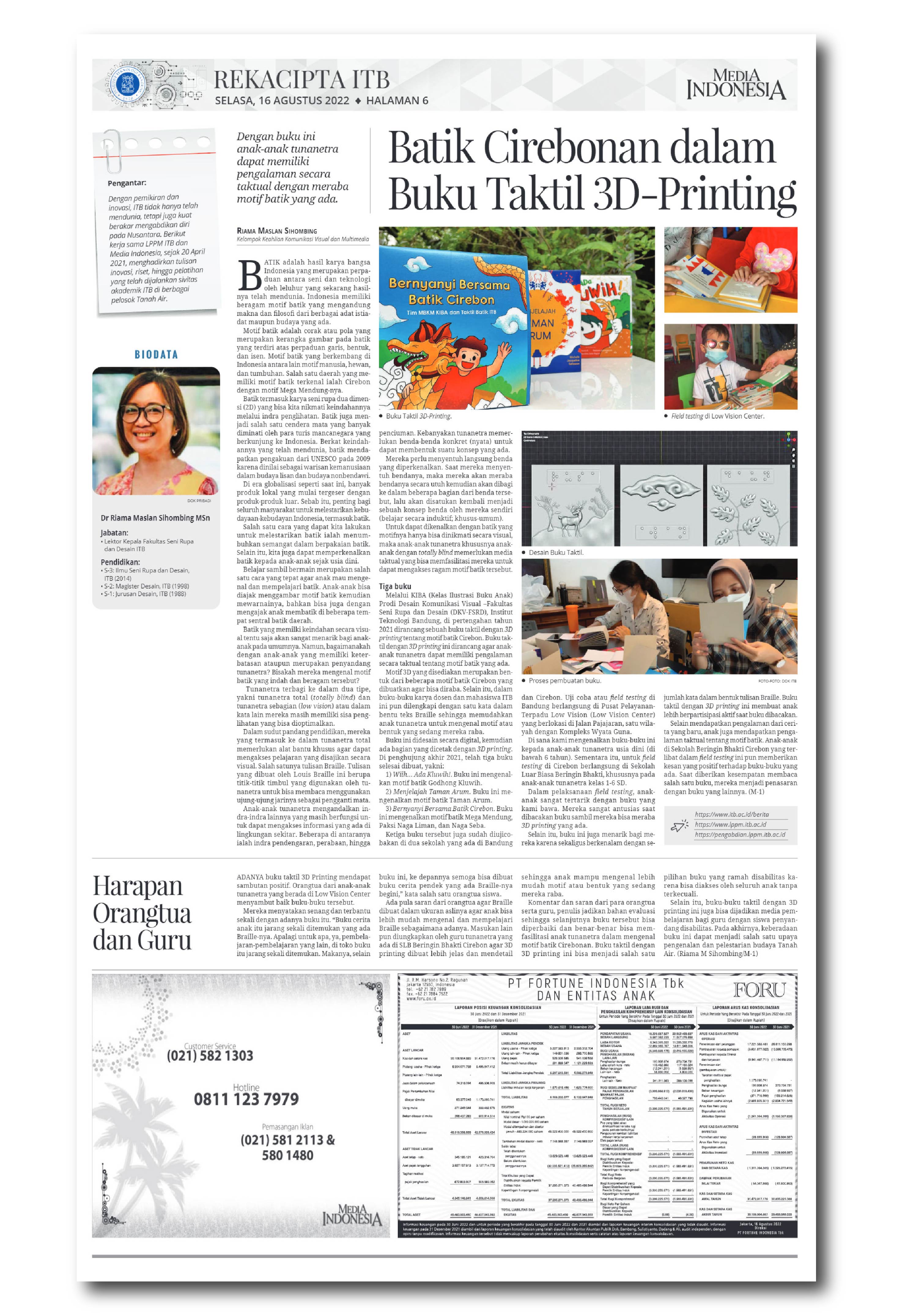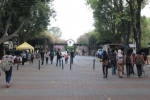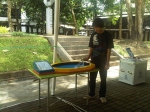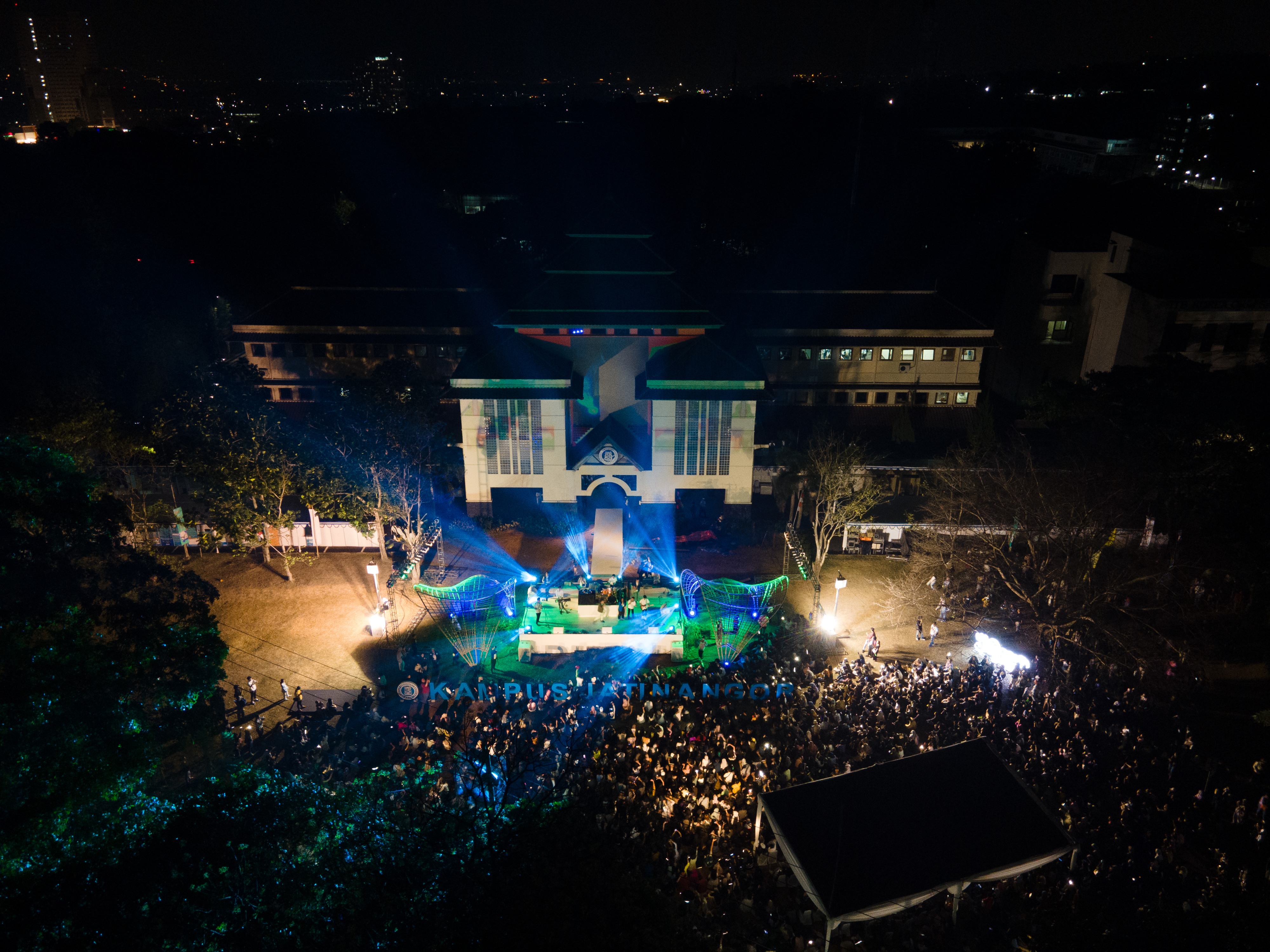Preserving Cirebon Batik Motives with 3D-Printed Tactile Books
By Adi Permana
Editor Adi Permana
BANDUNG, itb.ac.id – As a part of Indonesia's cultural riches which combine art and technology, batik has various motives each with its own distinct meaning and philosophy. One region that has a famous batik motive is Cirebon with its Mega Mendung pattern. The motive is trying to illustrate the value of patience that ought to exist in the heart of every man.
Batik is classified as a two-dimensional art that can be enjoyed by using sight perception. Because of its world-famous beauty, batik has successfully gained recognition from UNESCO in 2009 as an intangible cultural heritage of humanity. However, in this globalization era, there are many local products, including batik, that are slowly eroded by the influx of foreign products. If we do not preserve it, this will slowly erode the love of a nation to its own culture.
Learning by playing concepts can be a good way to introduce batik to the younger generation. One activity that is both easy and liked by many is storytelling, and for people with disabilities, it is not an exception. But unfortunately, for those who have totally blind and low vision sight conditions, batik is an abstract concept because they are unable to perceive the variety of its motives.
Therefore, in mid-2021 through Children Books Illustration Class, Visual Communication Study Program Faculty of Arts and Design ITB designed three tactile 3D-printed books. The titles of those three books are:
1. Wiih… Ada Kluwih! (introducing Gondhong Kluwih batik motive)
2. Menjelajah Taman Arum (introducing Taman Arum batik motive)
3. Bernyanyi bersama Batik Cirebon (introducing Mega Mendung, Paksi Naga Limand, and Naga Seba batik motives)
This ITB lecturers and students collaboration is intended for children with visual impairment who do not have tactual experience in perceiving Cirebon batik motive as cultural work. Even if they have a visual impairment, 3D-printed models that were provided can stimulate their sense of touch. Braille texts also help with explaining the type of batik motive that they are touching.
As a trial effort, two schools in Bandung and Cirebon were chosen as the field-testing sample. The first school is located in the Low Vision Center, Wyata Guna Complex, Padjajaran Street, Bandung. There, the 3D-printed books were introduced to visually impaired children under the age of six years old. The second school is the Beringin Bhakti Extraordinary School, located in Cirebon. For the second school, the team presented the books to the 1st to 6th grader elementary school students.
The field-testing results show that children have a high curiosity about books. "Even though the process of reading the books was carried out in stages because of the limited copies, some students were very curious and even want to try to read all of the three titles," explained Dr. Riama Maslan Sihombing, FAD ITB Head Lector.
The children were also very enthusiastic to actively participate in touching the 3D-printed Cirebon batik motives and the braille texts on the tactile books. Even so, some students are still finding it difficult to understand the pattern that they were touching, because in its essence those motives are composed of unique pictures. Surely this becomes one interesting challenge to design every motive in a 3D mode.
According to Dr. Riama, one interesting thing that she found was when a child mistook a cloud pattern with a cow. Apparently, what he meant by "cow" was the rough texture on the 3D-printed surface that reminded him of cowhide.
In addition to asking the students' opinions, the team also approached the parents. They received many positive comments on their tactile books, one parent even said, "Braille children's storybooks are very hard to find. Moreover, the one that has educational value, in the Gramedia bookstore there is barely any of it. Therefore, in addition to this book, I hope that in the future there will be more braille text short story books like this."
As a critic, the parents ask the team to change the braille text size to the standard size so that it can be more recognizable and easier to learn. In some parts of the books, the text dots are too large causing the reader to spend more time identifying an alphabet. A sight-impaired teacher from Beringin Bhakti Extraordinary School also advised that the 3D-printed surface be made clearer and more detailed, and also to complement it with explanations of the history and meaning behind each batik motive.
Every comment that was received during the field testing in Bandung and Cirebon will be used as evaluation materials. The plan is to improve the books so that it can facilitate children with impaired sight to learn more about Cirebon batik motives as an Indonesian national heritage.

*This article has been published in Media Indonesia rubrik Rekacipta ITB, the complete article can be reat at https://pengabdian.lppm.itb.ac.id
Reporter: Sekar Dianwidi Bisowarno (Bioengineering, 2019)
Translator: Favian Aldilla R (Civil Engineering, 2019)

.jpg)

.jpg)
.jpg)
.jpg)


